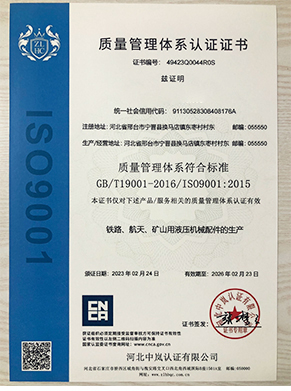- Arabic
- French
- Russian
- Spanish
- Portuguese
- Turkish
- Armenian
- English
- Albanian
- Amharic
- Azerbaijani
- Basque
- Belarusian
- Bengali
- Bosnian
- Bulgarian
- Catalan
- Cebuano
- Corsican
- Croatian
- Czech
- Danish
- Dutch
- Afrikaans
- Esperanto
- Estonian
- Finnish
- Frisian
- Galician
- Georgian
- German
- Greek
- Gujarati
- Haitian Creole
- hausa
- hawaiian
- Hebrew
- Hindi
- Miao
- Hungarian
- Icelandic
- igbo
- Indonesian
- irish
- Italian
- Japanese
- Javanese
- Kannada
- kazakh
- Khmer
- Rwandese
- Korean
- Kurdish
- Kyrgyz
- Lao
- Latin
- Latvian
- Lithuanian
- Luxembourgish
- Macedonian
- Malgashi
- Malay
- Malayalam
- Maltese
- Maori
- Marathi
- Mongolian
- Myanmar
- Nepali
- Norwegian
- Norwegian
- Occitan
- Pashto
- Persian
- Polish
- Punjabi
- Romanian
- Samoan
- Scottish Gaelic
- Serbian
- Sesotho
- Shona
- Sindhi
- Sinhala
- Slovak
- Slovenian
- Somali
- Sundanese
- Swahili
- Swedish
- Tagalog
- Tajik
- Tamil
- Tatar
- Telugu
- Thai
- Turkmen
- Ukrainian
- Urdu
- Uighur
- Uzbek
- Vietnamese
- Welsh
- Bantu
- Yiddish
- Yoruba
- Zulu
Jul . 31, 2024 02:40 Back to list
Understanding the Importance of Timing Belts in Automotive Maintenance and Performance Optimization
Understanding Timing Belts for Cars Importance, Function, and Maintenance
When it comes to the smooth operation of a vehicle, the timing belt is often an unsung hero. This critical component plays an essential role in ensuring that the engine runs efficiently and effectively. Understanding what a timing belt does, its importance, and how to maintain it can save car owners from expensive repairs and ensure optimal performance.
What is a Timing Belt?
A timing belt is a rubber belt with teeth that connects the crankshaft to the camshaft in an internal combustion engine. Its primary function is to synchronize the rotation of the crankshaft and camshaft, ensuring that the engine’s valves open and close at the correct times during the intake and exhaust strokes. Without this synchronization, the engine would not run smoothly, leading to poor performance and potential damage.
Importance of the Timing Belt
The timing belt is integral to the engine's operation, affecting performance, fuel efficiency, and overall longevity. If the timing belt were to fail, the consequences could be catastrophic. Engines rely on their pistons and valves functioning in harmony, and a failure in the timing belt can lead to the valves striking the pistons. This could cause severe engine damage, resulting in costly repairs or even engine replacement.
Furthermore, manufacturers often specify a maintenance schedule for timing belt replacement, typically ranging from 60,000 to 100,000 miles, depending on the vehicle model. Regular maintenance ensures that the timing belt remains in good condition and functions correctly, helping to avoid unexpected failures.
Signs of a Failing Timing Belt
It’s crucial for car owners to be aware of the signs of a failing timing belt. Common indicators include unusual engine noises, such as ticking or rumbling, which may signal that the belt is worn or has become loose. Additionally, if the engine misfires or runs roughly, it could be a sign that the timing belt is not properly synchronized. Other symptoms may include oil leaks from the front of the engine or visible wear on the belt itself.
timing belt for cars

Timing Belt Maintenance
To ensure the longevity and reliability of the timing belt, proactive maintenance is essential. Here are some key tips for car owners
1. Follow Manufacturer Guidelines Always adhere to the recommended replacement schedule outlined in the owner’s manual. This is the best way to avoid unexpected failures.
2. Regular Inspections During routine maintenance checks, have the timing belt inspected for signs of wear, such as fraying, cracks, or looseness.
3. Replace the Water Pump Since the timing belt often drives the water pump, it's a wise idea to replace it at the same time. This can save on labor costs and prevent future issues.
4. Listen for Strange Noises Be attentive to any unusual engine noises and have them checked by a professional if they occur.
5. Keep an Eye on Fluid Leaks Oil leaks can speed up wear on the timing belt. Addressing leaks promptly can extend the belt’s life.
Conclusion
In summary, the timing belt is a vital component in any car’s engine. Understanding its function, recognizing signs of failure, and adhering to a regular maintenance schedule can significantly enhance the performance and longevity of a vehicle. By taking the necessary precautions, car owners can avoid the high costs associated with timing belt failure and ensure their vehicles run smoothly for years to come. Investing time and effort into timing belt maintenance is invaluable for any conscientious car owner.
-
Upgrade Power Steering Pump Belt for Smooth, Quiet Operation
NewsAug.27,2025
-
Precision Timing Belt & Chain: Engine Performance & Durability
NewsAug.26,2025
-
Precision Lathe Drive Belts: Durable & Reliable Performance
NewsAug.25,2025
-
84.5 Serpentine Belt: Durable & Precision Fit for Your Engine
NewsAug.24,2025
-
Premium Ribbed Drive Belts for Quiet Power Transmission
NewsAug.23,2025
-
High-Performance Vehicle Timing Belt for Engine Precision
NewsAug.22,2025

